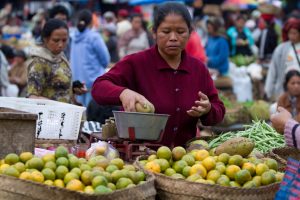All around the world, inflationary pressure is pushing up the price of basic necessities like energy and food. I think this is mainly because as the pandemic fades, a wave of pent-up demand has been uncorked and it is taking a while for supply chains to catch up. I am also of the opinion that this is a temporary, albeit painful, adjustment, which means many of the extraordinary reactions to it that we have seen are not likely to have much staying power.
Recall that we went from a world where there was essentially zero demand for oil in 2020, to a world where there is overwhelming demand as people start venturing out of their houses and driving and flying again. And this happened within the span of a few months. Once you add in Russia’s invasion of Ukraine – both of the nations are important global sources of fertilizer, wheat, oil, and gas – it isn’t surprising that food and energy prices have shot up.
The more important question is, what are states going to do about this? In the Asia-Pacific we have seen some moves toward old fashioned protectionism, mainly in the form of export bans. This year alone Indonesia banned the export of coal and palm oil, Malaysia recently stopped exporting chickens, and India is clamping down on exports of wheat. Is this just the tip of the iceberg, and are we about to see a wave of retaliatory measures that could set off a trade war in Southeast Asia?
The good news is: that seems unlikely to me. India, Indonesia, and Malaysia haven’t banned exports because they want to hurt their trade partners, or achieve a strategic position in the global economy. The reason is much simpler. They are afraid of running out of certain staple goods and want to ensure sufficient supply exists to meet the needs of the domestic market. They need only look to their neighbor in Laos to see what happens when a country begins to run short of fuel.
Most countries in ASEAN are deeply integrated into global trade networks and all else being equal prefer economic growth to be anchored by exports and surpluses. Vietnam and Thailand, for instance, would probably only ban exports if the domestic situation was truly dire. For Singapore, as a regional hub for commerce, transportation and global financial flows, maintaining a system of free and open trade is critical to economic security.
Indonesia and Malaysia likewise only banned certain exports as last resorts, and are in a slightly more secure position to do so simply because the sky-high price of their commodity exports like palm oil gives them a bit of a cushion in the current account for the time being. The fact that Indonesia walked back its coal and palm oil export bans within a matter of weeks tells you that they are not looking to starve global markets for any length of time. They are merely trying to send a message that the domestic market needs to be supplied first. And all of this scrambling about reflects a global economy where market prices have fundamentally gone out of whack.
A simple way to think of prices is that they send a signal about the balance between supply and demand in a particular market. Right now, high prices are telling us that demand for things like energy and food is outpacing supply. Typical market-based solutions to this problem include increasing production through more investment, or cooling off demand through interest rate hikes. But these can take time to show up in lower prices, or have adverse effects like slowing economic growth or increasing unemployment. And in Southeast Asia the state typically shows less deference to the market, especially when the national interest is at stake
A more direct, and less market-friendly, intervention is to simply increase the supply of locally produced goods by blocking exports. And that is what we are seeing, in limited ways, by countries that have the domestic resources to do so. As the supply squeeze recedes and prices stabilize, we should see less of these interventions and a return to more normalized trade flows. All of which suggests to me that the protectionist tendencies bubbling up in the region will be limited in scope and short in duration.

































